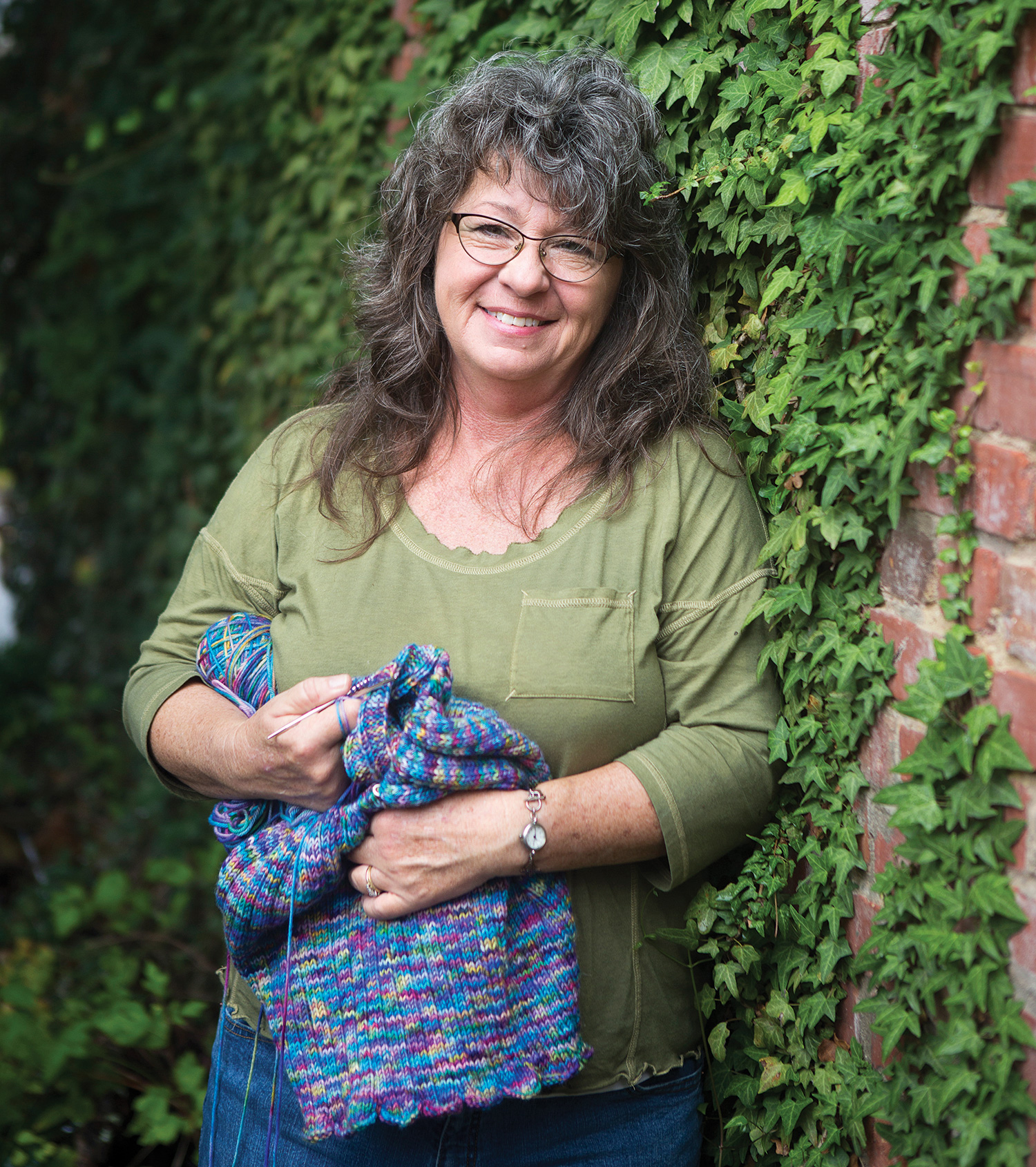
Back then — “then” loosely meaning the mid-to-late 1800s, the pioneer era of Laura Ingalls Wilder’s Little House on the Prairie book series — fiber artistry grew from necessity. Mothers darned breeches and patched children’s clothing, endlessly, and fathers sewed utility pouches from cowhide. “Making” was a necessary pursuit, not the métier of highbrow hobbysmiths.
Fiber artist Kim Green takes it back even further. “It’s almost tribal to be creative,” she says. “But with society progressing, we’re looking down and not up at the color, beauty, and activity.”
As owner of Easy Knits, a virtual yarn shop and instruction resource based in Old Fort, Green is set on unspooling the rather posh air that now surrounds portage and blocking, looping and threading. Such hand skills shouldn’t feel exotic — they are deeply seated in the tactile nature of man, and not some boutique endeavor, she feels.
Though no self-proclaimed Luddite, Green does blame technology a bit. A staticky black-and-white TV was the only screen in her South Carolina childhood home. To keep boredom at bay, her great-grandmother, Anna, taught her to crochet, embroider, and sew. Over skeins, the family matriarch rattled off elaborate stories, the most legendary concerning an incident in a typewriter factory that left her with one less digit.
Also fixated on the rustic lifestyle chronicled by Ingalls Wilder — as were many girls who grew up reading the semi-autobiographical series — Green took her skills to market, selling goods and buying more material with the profits. The craftsmanship continued into young adulthood: she fashioned wedding dresses, her own included, and play costumes (even a dozen of the storied 101 Dalmatians). Excursions into small-town theater aside, she became determined to revisit fiber’s pedestrian roots.
Green’s current forum includes lectures at Black Mountain Center for the Arts, Greenville’s Black Sheep Farm, and what will soon be a brick-and-mortar at her personal residence, Daisy Hill Farm. She discusses the basics, of course, sometimes breaking out a 120-year-old Civil War sock machine, a primitive bit of machinery nicknamed “Edgar” — but dialogues often shift to dyeing techniques.
Even though Green wants to demystify fiber art for aspiring makers, her own methods, handed down the bloodline, can be quirky. She colors fleece with vinegar-and-salt dyes, herbal tints — even Kool-Aid.
“It amazes me that people are impressed by [color experimentation],” says Green. “We do it accidentally, all the time” — when failing to separate laundry properly, for instance, bleeding new hues into formerly white T-shirts or socks.
Her laid-back attitude stretches to the technicalities of knitting and weaving, as well. During Green’s ten years working in the mental-health sector, she taught a blind woman to knit.
“It’s not about sight,” she says. “It’s about getting it in your head and recognizing the tactility of it. Then, there’s little effort or communication required.”
The Southeastern Animal Fiber Fair happens October 28, 29, and 30 at the WNC Agricultural Center in Fletcher, with vendors, demonstrations, and exhibits. For more information, visit saffsite.org. To contact Green, e-mail we4greens@gmail.com or call 828-458-6199.
